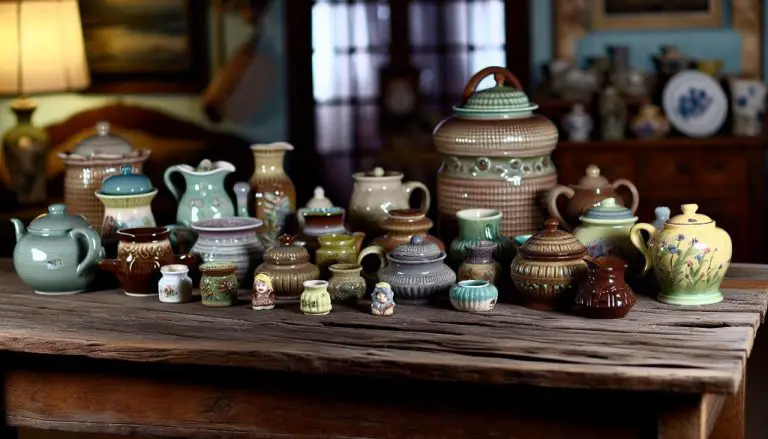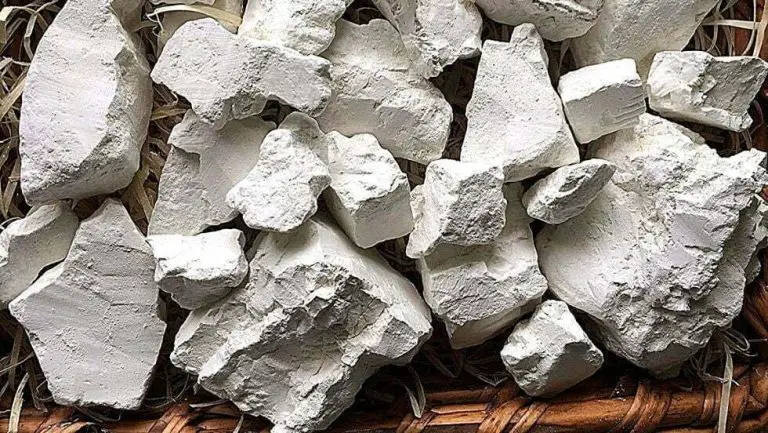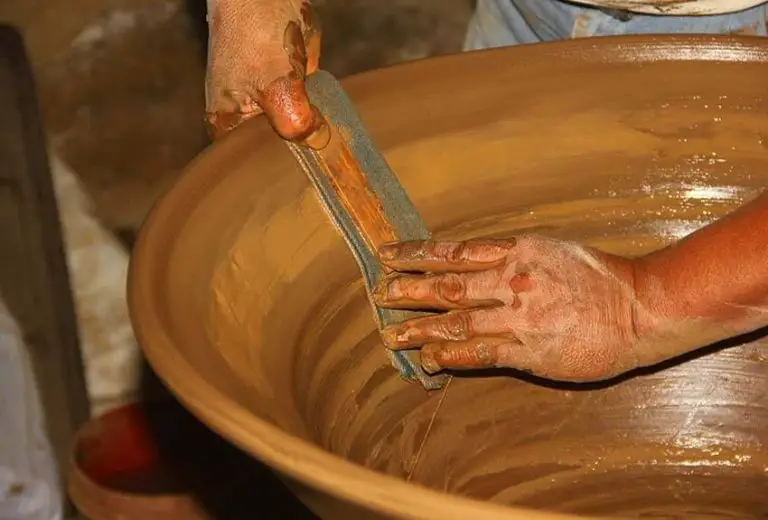What Is The Most Eco Friendly Clay?
Eco-friendly clay refers to clay that is sourced and produced sustainably, with minimal environmental impact. As awareness grows around sustainability and green living, more attention is being paid to the origins and ecological footprints of everyday materials like clay.
Sourcing clay in an ethical, eco-conscious manner is important for several reasons. Clay mining and manufacturing can damage habitats, lead to deforestation, and pollute waterways. Choosing sustainable clays helps protect nature and wildlife. Eco-friendly clays also conserve resources for future generations by reducing waste, emissions, and energy use.
When selecting clay, it’s ideal to look for options that are natural, unbleached, and free of synthetic additives. Locally-sourced clays have lower carbon footprints from transportation. Reusable and compostable clays are more sustainable as well. Overall, eco-friendly clays benefit people, communities, and the planet.
Clay Formation
Clay is formed from the natural weathering and erosion of rocks over long periods of time. The scientific term for clay is an aluminum phyllosilicate, meaning it contains silica and alumina minerals that form sheet-like structures. There are several main processes involved in clay formation:
– Physical weathering – Rocks are gradually broken down into smaller particles through processes like freezing/thawing, plant roots growing, animal burrowing, and thermal expansion. These processes expose more surface area of the rock for chemical weathering to take place.
– Chemical weathering – Minerals in the rocks undergo chemical changes due to exposure to water, air, acids, and organic matter. For example, feldspar, one of the most common minerals found in igneous and metamorphic rocks, chemically weathers into kaolinite, which is the primary clay mineral in kaolin clays.
– Transportation – Weathered rock particles are transported by water, wind, glaciers, gravity, or other forces and deposited in low-lying areas like lakes, oceans, rivers, and valleys.
– Sedimentation – The transported particles settle out of the water or air in layers according to their size. Heavier larger particles settle first, while finer clay particles take longer to settle.
– Compaction – As more sediment accumulates, it compresses deeper layers and forces out water. The pressure squeezes clay particles closer together.
– Cementation – Over very long time periods, chemical cements like calcite or silica may form to bind clay particles into sedimentary rock.
Through these geological processes, natural clays can form from the breakdown of igneous, sedimentary, and metamorphic rocks given sufficient time, weathering, erosion, transportation, deposition, and compaction.
Common Clays
There are several common types of clay that are widely used for different purposes:
Kaolin Clay
Kaolin clay, also known as China clay, is a soft white clay that is composed mainly of the mineral kaolinite. It is mined primarily in Brazil, the United States, and China. Kaolin has a wide variety of uses including in ceramics, medicine, cosmetics, and as an inert filler in various products.
Ball Clay
Ball clay is a kaolinitic sedimentary clay that commonly consists of 20-80% kaolinite. It fires to a light cream color and is used in whiteware ceramics and as a major component in ceramic glazes. The largest deposits of ball clay are found in the United States.
Fire Clay
Fire clays are refractory clays that contain a high percentage of alumina and silica. They are able to withstand very high temperatures such as those achieved in kilns and furnaces. Fire clays have many applications including making ceramics and cements.
Bentonite Clay
Bentonite is a clay generated frequently from the alteration of volcanic ash. It is composed predominantly of smectite minerals, usually montmorillonite. Bentonite has excellent absorption properties and is used in a variety of adhesives, binders, and detergents.
Clay Mining Impacts
Clay mining can have significant environmental impacts if not done sustainably. The key areas of concern are:
- Habitat destruction – Clearing land for clay mining removes vegetation and topsoil, destroying natural habitats for plants and animals.
- Deforestation – Clay deposits are often found in forested areas which are cleared for access to the clay.
- Soil erosion – Removing topsoil and vegetation leaves the remaining soil vulnerable to erosion from wind and rain.
- Water pollution – Clay mining sites can contaminate groundwater and rivers through leaching of heavy metals and chemicals.
- Air pollution – Dust and gases are released during clay extraction and transportation. Diesel fumes from heavy machinery also pollute the air.
- Waste generation – Extraction produces waste soil, rock, minerals, and overburden that must be managed.
- Land subsidence – As clay deposits are excavated, the ground level lowers. This subsidence can disrupt drainage and expose aquifers.
- Noise and vibration – The use of heavy machinery and blasting creates significant noise and vibration pollution.
Sustainable mining practices such as habitat restoration, air/water monitoring, and waste management programs are essential to minimize the impacts of clay extraction.
Benefits of Eco-Friendly Clay
Using eco-friendly clay provides important benefits for the environment. By opting for sustainable clays, emissions associated with clay production can be reduced.
Eco-friendly clays are often locally sourced, providing income opportunities for small-scale artisans and reducing the environmental impact of transportation. Local and ethical sourcing ensures clay is obtained through fair trade practices.
Sustainable clays can also be reusable and recyclable. Choosing clays designed for reuse reduces waste. Some eco-friendly clays can even be recycled after their initial use.
In addition to environmental benefits, eco-friendly clays are often free of toxins, making them safer for artists and consumers. The health impacts of sustainable clays are minimized.
By selecting the most earth-friendly clay options, artists and consumers can reduce their environmental footprint and support ethical practices. The benefits of sustainable clays make them an important option to consider.
Most Sustainable Clays
When evaluating the sustainability of different clays, it’s important to consider the properties that make clays more eco-friendly.
Clays with natural origins and minimal processing tend to have lower environmental impacts. Unrefined clays directly sourced from the earth without additives or synthetics are ideal.
Locally sourced clays reduce the carbon footprint from transportation. Supporting responsible local mining practices helps communities and reduces habitat destruction.
Reusable and recyclable clays are also eco-friendly options. Clays that can be reconstituted and reused help reduce waste. Recycled clay bodies utilize industrial byproducts or scrap clay.
Clays with natural colorants from mineral pigments have an advantage over clays with synthetic dyes. Plant-based additives are also more sustainable than petroleum-based options.
Low-fire clays require less energy for firing, reducing carbon emissions. Likewise, air-dried clays eliminate kiln firing altogether.
When sourced and produced responsibly, clays like kaolin, bentonite, and porcelain stand out for their eco-friendly properties.
Local and Ethical Sourcing
An important aspect of sustainable clay sourcing is prioritizing local and ethical suppliers. By purchasing clay from businesses within your own community or region, you support local economies and reduce the environmental impact of long-distance transportation.
Seek out clay suppliers who mine their clay through ethical practices. Some key indicators of ethical mining include:
- Minimizing landscape disruption and land rehabilitation after clay extraction
- Safe working conditions and fair wages for workers
- Consulting indigenous communities and assessing cultural impacts before mining
- Using extraction methods designed to reduce waste and pollution
When sourcing clay, ask suppliers about their mining practices and aim to purchase from companies that prioritize sustainability and fair labor standards. This helps drive demand for ethical practices across the clay industry.
Purchasing from local and ethical suppliers may come at a higher price but it enables you to make an environmentally responsible choice. With consumer awareness and demand for sustainable clay growing, more ethical and eco-friendly options should become available.
Reusable and Recyclable
One of the most eco-friendly aspects of clay is that it can be reused and recycled after firing. Here are some tips for reusing clay:
- Keep all your clay scraps, trimmings, and leftover clay from projects. These can be rehydrated and reused.
- When kneading and wedging clay, save the trimmings. Rewedge them together to make fresh clay again.
- When clay dries out, break it up and soak it in water to reclaim it. Let it soak for several hours or overnight.
- Rehydrate clay slowly to avoid trapped air bubbles. Knead thoroughly once rehydrated.
- Reclaimed clay can be reused for any project, but is best for handbuilding techniques.
Fired clay can also be recycled and reused in new pottery projects:
- Break up fired clay pieces and old ceramic items and soak in water to soften.
- Grind soaked clay pieces into a reusable clay grog or additive using a mortar and pestle.
- Sieve grog to remove large particles. Combine with fresh clay in up to 50% ratios.
- Grog helps open the clay body for improved moisture venting and reduced shrinkage.
- Consider keeping grog color coordinated to avoid aesthetic issues.
- Recycling fired clay reduces waste and the need for new materials.
Alternative Materials
There are some other eco-friendly materials that can substitute clay for certain uses:
Wood – Unfinished, unvarnished wood is biodegradable and renewable. It can be ethically sourced or even upcycled from urban waste streams. Wood can substitute clay in some sculpture, mold making, or construction applications.
Natural fibers – Materials like bamboo, hemp, jute, and wool are renewable and biodegradable. They can replace clay for basketry, ropes, textiles, paper, and some building materials.
Recycled metal or glass – While not biodegradable, recycled metals and crushed glass are more sustainable than mined materials. They can be reused in many sculpture, jewelry, mosaic and construction uses that traditionally required clay.
Bioplastics – Some biodegradable plastics made from plant starch have clay-like properties when heated. These innovative materials may provide alternatives for ceramics and construction uses.
Sustainably sourced stone – Though mining carries environmental impacts, some stone like granite can be quarried more ethically. Local stone substitutes imported clay products in countertops, tiles, aggregates, and geopolymers.
Conclusion
When choosing the most eco-friendly clay, it’s important to consider the full life cycle, from sourcing to disposal. Clays that are ethically sourced, reusable, and recyclable have the lowest environmental impact. Regionally sourced clays reduce transportation emissions, while compostable clays avoid sending waste to landfills.
Ultimately, the most sustainable clays are natural earthenwares and stonewares. These clays can be locally sourced, reused for generations, and safely returned to the earth. With mindful production and use, traditional clays like terra cotta and red earthenware are the best eco-friendly option. By supporting sustainable artisans and reducing waste, we can enjoy the creativity and versatility of clay while protecting the planet.




